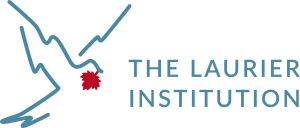 By: Isabelle Vauclair, a Laurier Institution Blog Contributor
By: Isabelle Vauclair, a Laurier Institution Blog Contributor
For decades, diversity has been widely discussed and valued in the corporate and research worlds. While society has taken great strides towards diversity, equity and inclusion (DEI) in the workplace, many companies are still fixated on the numbers. How many women, BIPOC, and disabled individuals have they hired? What percentages of LGBTQIA+ representation do their teams have? The statistics alone will have little to no impact on business growth. Diverse perspectives can only take root in an organization that allows them to grow, a workplace supported by all three DEI pillars. So, what are diversity, equity, and inclusion?
Let’s start with inclusion and work our way backward.
 Think of inclusion as a prerequisite for accessing diversity. Each person brings a diverse set of experiences, perspectives, and ideas to the table. Inclusion celebrates these differences by providing individuals of all backgrounds and identities equitable opportunities for success.
Think of inclusion as a prerequisite for accessing diversity. Each person brings a diverse set of experiences, perspectives, and ideas to the table. Inclusion celebrates these differences by providing individuals of all backgrounds and identities equitable opportunities for success.
According to HBR, there is a substantial ‘inclusion gap’ between a company’s diversity potential and the ability to utilize that potential. Even a company with an equal gender mix, for example, will have disparities in decision-making without inclusion. This can be for a number of reasons, but ultimately, a culture of inclusion is needed to address institutionalized discrimination and biases that become embedded in an organization’s culture over time.
Having a solid infrastructure for measuring DEI will help leaders see how often diverse perspectives are being factored into decision-making. Use a variety of metrics to make adjustments regularly.
Bottom line: diversity cannot exist without inclusion.
Now, where does equity come into play?
 Where equality says, “we’re all the same,” equity says “we are all different.” A cis-gendered white woman and a trans POC have very different life experiences, face different barriers in the workplace, and thus require a different set of tools to access the same opportunities. Individuals with disabilities or certain medical conditions may require more flexible work schedules, for example, or different aids in-office.
Where equality says, “we’re all the same,” equity says “we are all different.” A cis-gendered white woman and a trans POC have very different life experiences, face different barriers in the workplace, and thus require a different set of tools to access the same opportunities. Individuals with disabilities or certain medical conditions may require more flexible work schedules, for example, or different aids in-office.
While everyone deserves equal chances for success, there is no universal roadmap or guarantee. Equity helps close the ‘inclusion gaps’ that prevent all individuals from actively participating, contributing, and succeeding.
Who is considered diverse?
 When we say that someone is “diverse,” we are implying that they deviate from the ‘norm.’ This ‘norm’ typically refers to historically privileged identities, such as male, white or light-skinned, heterosexual, cisgender, and able-bodied individuals.
When we say that someone is “diverse,” we are implying that they deviate from the ‘norm.’ This ‘norm’ typically refers to historically privileged identities, such as male, white or light-skinned, heterosexual, cisgender, and able-bodied individuals.
While self-identification metrics form only a small part of DEI, it is important to consider how we may be positioning certain groups or identities over others. For example, when we classify someone who is racialized or has darker skin as “diverse,” we may perpetuate racist, white supremacist narratives. When we say that a trans person is “diverse,” we uphold cissexism and heteronormativity.
While the use of “diverse” is not inherently harmful, it is important to look out for when developing your organization’s rhetoric around DEI. Be wary of making business decisions based solely on identity, as this can breed resentment and division on your teams. Instead, link demographic data to inclusion data for a look at the bigger picture.
Incorporate DEI into your core values.
 At The Laurier Institution, we envision a world where diversity is valued and everyone is included. We work to promote DEI in local governance, as seen in projects like DiverseCity, and provide leadership opportunities for young people to become more actively involved in the issues they care about. Our past research on public policy includes issues around immigration, the Vancouver Housing Crisis, and the economic impact of Aboriginal title settlements in BC.
At The Laurier Institution, we envision a world where diversity is valued and everyone is included. We work to promote DEI in local governance, as seen in projects like DiverseCity, and provide leadership opportunities for young people to become more actively involved in the issues they care about. Our past research on public policy includes issues around immigration, the Vancouver Housing Crisis, and the economic impact of Aboriginal title settlements in BC.
None of our efforts would be possible if we did not value the same action around diversity, equity, and inclusion that we strive to inspire in others. Including DEI in our values was a given. The next step was effectively putting those values to practice.
For guidance on how to take actionable steps towards DEI, check out our blog on remote strategies for greater inclusion.


